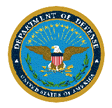Home
Abstract
Introduction
Literature Review
Methods
Results
Discussion
References
Appendix A
Appendix B
 DISCUSSION
DISCUSSION 
This examination explored the role of the embedded journalists
and their impact on the tone and framing of coverage. Newspaper coverage
by embedded reporters in the three conflicts analyzed was more positive
in tone toward the military and troops interviewed than those of non-embedded
reporters. Additionally, stories written by embedded print journalists
were more episodic in nature of coverage, focusing on individual service
members, units and events vice the conflicts as strategic wholes.
As Appendix B and the results section demonstrate, there was a marked
difference in mean attitude and trust measures between embedded and non-embedded
reporters’ stories. Embedded reporters were far more likely to report
stories more positive toward the military overall, and more trusting of
individual military people. These findings were constant across the conflicts
analyzed. The results support the assumption of H1 that, as journalists
are absorbed into military organizations – by meeting and congregating
with troops, learning about their service culture and establishing similarity
– the more positive the reporting will be. As Victoria Clarke, former
head of DoD Public Affairs and a principal architect of the embed policy,
stated in an interview with Eisman (2003):
Anytime you can give people an up-close and personal look at the U.S.
military, you're having a good day. Because they're so professional. They're
so well-trained. They're so dedicated. And by demonstrating that, you
can build and maintain a lot of support. (p. A5)
Our findings support the assertion that the development of a relationship
between reporters and troops will result in stories that characterize
the military in the way Clarke suggests.
Referring again to Appendix B and the results section, H2 was also supported.
H2 stated that embedded reporting would be more episodic in nature than
non-embedded reports. Episodic coverage displays a description of events,
or individual stories compared to thematic coverage, which is "big
picture" and broader in scope. The results supported this prediction,
demonstrating a significant tendency of embedded reporters to focus on
singular events and individual troops over the course of a conflict. Increased
familiarity with troops and units results in more positive coverage. Our
findings indicated that, not only was the coverage more episodic, but
episodic coverage was closely correlated with a more positive tone toward
the military. Combined, closer relationships between reporters and troops
result in more episodic and, therefore, more positive portrayal of the
military in general and the troops specifically.
A possible draw back of purely episodic coverage of a story as big as
war is that the presentation would not allow for a deeper understanding
of the background issues associated with the conduct of combat. Iyengar
(1991) says episodic stories -- while bringing to life single people or
events in a way thematic stories don't -- may focus too much on aspects
of little import at the expense of important general, interconnected issues
that contribute to greater learning. This concern, however, is balanced
by the fact that the newspapers analyzed ran a mix of stories from embedded
and non-embedded reporters which resulted in fair space devoted to both
episodic- and thematic-dominated stories. Therefore, the presence of embedded
media and the framing they provided may have contributed more to public
knowledge and richer coverage than macro-issue focused, purely thematic
coverage would or could have.
If the success of the embed program is to be measured by the positive
coverage originating from embedded sources, our analysis shows that the
Department of Defense met its goals in the area of print coverage. According
to Strupp (2003), the four newspapers used in our sample have a combined
circulation of more than 3 million and are all in the top seven of largest
U. S. newspapers. The influence and impact of these newspapers extends
beyond printed copies in circulation to online versions of daily papers,
in extensive citation by other media sources (television, radio, internet,
etc.) and reliance by public officials and policy makers on these publications
for information. This ripple effect makes these publications even more
salient than mere circulation suggests. The results of our analysis resonate
beyond the seemingly limited scope of our study and are worthy of further
research in other media venues, namely television coverage.
Limitations
With any study, there are some limitations. The limitations identified
in this project are: time allotted to complete the study, lack of experience
in conducting content analysis, military status of coders, wars selected
for study and lack of generalization to all reporters.
Researchers want to publish in a timely fashion; however, due to the time
constraints of the Joint Course in Communication at the University of
Oklahoma, the researchers were under a deadline for a final grade. This
research study was completed in three weeks. Due to this time constraint,
the researchers narrowed their focus to all stories pertaining to combat
within a 5-day window after the start of ground operations in the opposing
country. By selecting only five days, this limited the study's sample
size. Many articles before and after this time period were excluded. Potentially,
these articles could have brought more significant data to the findings.
By enlarging the field of study, future researchers can build a more accurate
and powerful collection of data.
The lack of experience by the research team was a significant limitation.
Coders should be experienced and of a similar academic background and
training should be more than a simple discussion of the coding categories
(Kaid & Wadsworth, 1989). Furthermore, coders had various educational
levels which added some limitation to the study. Future researchers should
develop a more in depth code book and use experienced coders.
Another limitation in this research was the bias of the coder. The coders
were Department of Defense members, each trained in military public affairs.
Because of their official functions in the military, the coder's views
may have been biased toward coverage of military and combat operations
in the articles. Whether military members would be more or less critical
of the newspaper coverage cannot be determined. Future researchers should
use coders that are not tied in some way to coverage or content of the
articles.
The wars/conflicts that were used in this study have an overall positive
impact on the United States and the military because the military met
its objectives. However, a limitation is derived from this outlook. This
study did not analyze embedded journalists from a war/conflict that resulted
in negative impact toward the U.S. or the military; for example the Vietnam
War. This does not mean embeds in Vietnam did not produce more positive
or episodic coverage, but future research may consider this limitation,
to lend more historical credence to the findings.
The last limitation is one of generalizability. In this study we only
researched stories from print journalists. There is a myriad of radio
and TV coverage, both embed and non-embed reporting. This study concentrated
on the print journalist, because it was the most economical way for the
researchers to view the coverage. Future researchers may want to consider
a sample from all forms of media to give the study more powerful results.